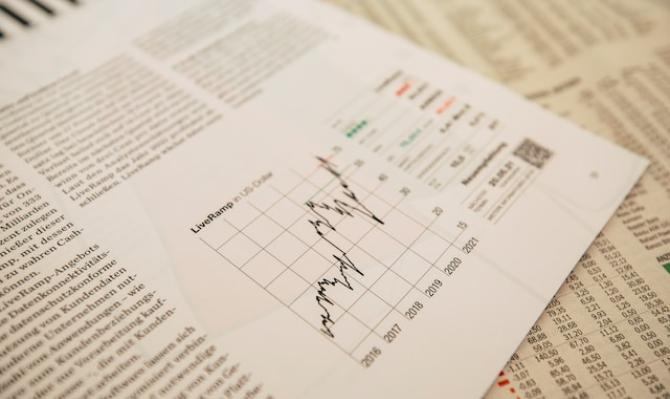Rising food prices in Spain: what lies ahead?
The rise in food prices is proving to be more persistent than expected. In this article, we analyse the factors behind this inflationary episode and what we can expect in the short and medium term.

One of the main factors driving the food price rally is the sharp increase in production costs in the primary sector and in the food industry.1 According to data from the Ministry of Agriculture, Fisheries and Food, the price of intermediate consumption in the primary sector increased by 31.1% in 2022, mainly due to the rise in energy prices (59.4%), fertilisers (74.3%) and livestock feed (31.7%).
That said, it should be noted that in recent months we have witnessed a gradual moderation. In particular, the indicators of prices paid by farmers suggest that production costs peaked last August. Between that month and January (the latest month with available data), there was a drop of 5.4% as a result of the fall in energy prices (–34.6%) and fertiliser prices (–4.5%). Thus, the pattern of production costs should relieve some of the pressure on consumer prices in the sector, although it should be noted that production costs remain very high and the recent falls have not undone the significant rally experienced last year.
- 1. See the article «Drivers of Spain’s inflation in 2023: indirect effects and food» in the Dossier of the MR02/2023.
Another factor that is pushing up food prices is the significant decline in agricultural harvests due to the drought. According to Eurostat data for Spain, the crop yield (tons per hectare) fell by around 18% in 2022,2 in line with the fall in the volume of annual rainfall, which according to AEMET data stood at around 537 litres/m², or 16% below the historical average.
This reduced agricultural production has also pushed prices upwards. As can be seen in the table, the fall in production in Spain during 2022 occurred across the board. Only in the cases of vineyard production (+1.9%) and potato production (–7.0%) were double-digit declines avoided.
Moreover, the falls in production seem to be persisting in 2023 to date, with no end in sight for the drought which Spain is currently enduring (March was the driest of the 21st century and the rainfall in April has also been negligible). As a result, production shortages are likely to continue to push up domestic food prices in the coming months.
- 2. Data estimated using figures on farming production and land area for grain, legumes, route vegetables and fruit trees, as well as vineyard production. No data available for 2022 for olives or fresh vegetables.

In a context of lower domestic supply, the performance of other food-producing countries in the EU gains relevance.3 In this regard, there appears to have been a change of trend in the prices of some agrifood products in the Union, having actually fallen in recent months. Price falls so far this year (data to March) are noticeable in the case of grain (–14.3%) and dairy products (–12.5%). Vegetable oil prices have also broken their upward trend (falling by 3.2% in 2023), although they remain very high. The exception is found in meat prices, which in 2022 followed a more mundane pattern, but in recent months have once again rebounded, resulting in a cumulative increase up to March of around 80% compared to December 2020.
- 3. On this note, Spanish imports of unprocessed agrifood products grew by 20.5% year-on-year in the second half of 2022, while exports fell by 8.6% year-on-year in the same period.

One of the keys to anticipating food price dynamics over the coming months lies in assessing how farm-gate prices will be transmitted to consumer prices via food industry production prices.
As shown in the third chart, the cumulative increase in farm-gate prices since the end of 2020 has been around 63% in both the EU (data to March) and in Spain (data to January). In this regard, the upward inertia of domestic prices in the EU has slowed, while in the case of Spain, affected by the drought, it has not. The transmission of these increases to food industry production prices and ultimately to consumer prices has been partial. Specifically, they have registered cumulative increases of 36% and 26%, respectively.
While price transmission does not necessarily have to be equal between source and consumption, the fact that there are still significant differences suggests that there may still be some margin for further transmission to final prices.4 Performing this same analysis by product type, the data suggest that the transmission between farm-gate prices and consumption has further to go in the case of meat products. On the other hand, there appears to be less margin for further transmission in the case of grain (and derivatives), dairy products and, above all, oils.
- 4. A complete transmission of the increase in costs to consumer prices does not mean that the increase in farm-gate prices is replicated in consumer prices (1:1 transmission); rather, it depends on the relative weight of the intermediate consumption in the production of each company along the production chain.

- 1. See the article «Drivers of Spain’s inflation in 2023: indirect effects and food» in the Dossier of the MR02/2023.
- 2. Data estimated using figures on farming production and land area for grain, legumes, route vegetables and fruit trees, as well as vineyard production. No data available for 2022 for olives or fresh vegetables.
- 3. On this note, Spanish imports of unprocessed agrifood products grew by 20.5% year-on-year in the second half of 2022, while exports fell by 8.6% year-on-year in the same period.
- 4. A complete transmission of the increase in costs to consumer prices does not mean that the increase in farm-gate prices is replicated in consumer prices (1:1 transmission); rather, it depends on the relative weight of the intermediate consumption in the production of each company along the production chain.




